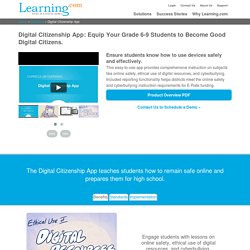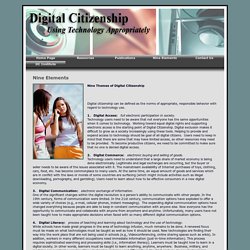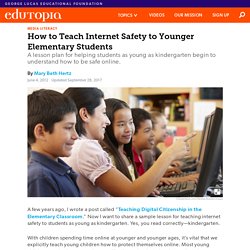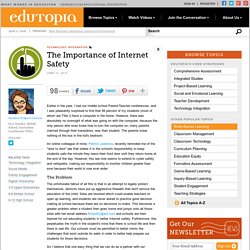

The Next Generation of LifelongLearningTeachers: Lesson plan - Copyrights: whose rights? I'm sharing here a lesson-plan on copyrights I've created with friend & eTwinner Paola Arduini during the eTwinning Ambassador course 2012.

Since at school I'm at the moment addressing this kind of topics, and in the web-age we're all involved in sharing vs protecting ownership, I think it can be useful to others as well.Title of the lesson:Copyrights: whose rights? Age range of pupils targeted by this lesson plan: students 10-12 years old (last year of Primary School, first year of Secondary School) Description:- First steps in the world of Copyrights. The students at this age are usually already familiar with the web.
They can work on their own assignments/homework, both alone or in a team, using ICT tools. This lesson, that can also suit the beginning of any eTwinning or international project (the “introductions” part) can trigger a discussion and reflection on the use of web materials and the importance of copyrights. We can start from here, following these steps: 9. Twitter 101: 5-Step Guide for Social Media in Education. If you aren’t using Twitter, chances are that you’re reluctant to adopt new technology.

Or maybe you’ve used Twitter for years to keep up with friends but now want to use it in the classroom. Either way, you might be hesitant to ask colleagues for help. Fear not. We’ll guide you through the Twitter landscape and show you how to find the best educational resources for both yourself and your students. Step 1: Get Started First, create your Twitter account. If you have a personal account and want to create a separate account for school, consider making your personal account private. Fill out your bio with keywords — teacher, education, etc. — that can help others with shared interests find you. — ikeepsafe.org. K-12 Digital Citizenship Curriculum. 13 Tips for Monitoring Kids’ Social Media. The American Academy of Pediatrics (AAP) recently released findings from a comprehensive study on the impact social media has on kids and families.

Although there are real benefits to kids using sites like Facebook, including increased communication, access to information and help in developing a sense of self, there can be serious downsides to all this online sharing too. Social networking is on the rise, and the study found that 22 percent of teenagers log onto their favorite social media sites more than 10 times a day, and that 75 percent own cell phones. Big Data: The Internet is Watching You! Is Digital Privacy At An End? Reclaim Our Privacy. Social Media Privacy. The Future of Internet Privacy. Data Protection... What you need to know. Hot on Your Trail: Privacy, Your Data, and Who Has Access to It. Your Digital Footprint. What is Digital Citizenship? Digital Citizenship App: Equip Your Grade 6-9 Students to Become Good Digital Citizens.
Engage students with lessons on online safety, ethical use of digital resources, and cyberbullying.

Provide students access to instruction on their Android or iOS mobile device. Ensure student comprehension with an integrated quiz. Definition Of Digital Citzenship. The Definition Of Digital Citizenship.

DIGCI2 excerpt. K-12 Digital Citizenship Curriculum. Super Digital Citizen Video. Nine Elements. Nine Themes of Digital Citizenship Digital citizenship can be defined as the norms of appropriate, responsible behavior with regard to technology use. 1.

Digital Access: full electronic participation in society. Five-Minute Film Festival: Are We Addicted to Technology? It's the age of mobile.

According to Pew Research Internet Project, over 90 percent of American adults own a cellphone, and 73 percent of American adults online use a social networking site of some kind. Research from software analytics company New Relic supposedly found that Americans check their devices an average of 150 times a day. How to Teach Internet Safety to Younger Elementary Students.
A few years ago, I wrote a post called “Teaching Digital Citizenship in the Elementary Classroom.”

Now I want to share a sample lesson for teaching internet safety to students as young as kindergarten. The Importance of Internet Safety. Earlier in the year, I had our middle school Parent/Teacher conferences, and I was pleasantly surprised to find that 99 percent of my students (most of whom are Title I) have a computer in the home.

However, there was absolutely no oversight of what was going on with the computer, because the only person who even knew how to turn the computer on, many parents claimed through their translators, was their student. The parents knew nothing of the box in the kid's bedroom. An online colleague of mine, Patrick Ledesma, recently reminded me of the "door to door" law that states it is the school's responsibility to keep students safe the minute they leave their front door until they return home at the end of the day. However, this law now seems to extend to cyber safety and netiquette, making our responsibility to monitor children greater than ever because their world is now ever wider. The Problem Resolutions. A Starting Point for Ensuring Student Online Privacy. Our society is struggling with issues regarding individual privacy.

Heated debates are occurring on topics that range from whether the government should be allowed to conduct mass surveillance of citizens to the information that companies should be allowed to collect based on one's computer activity -- and what they should be allowed to do with it. There are also concerns about the security of personal data in general -- consider the data breach at Target last year. A Complicated Issue A January 2014 survey of registered voters released by CommonSense Media found that 90 percent of respondents are either very or somewhat concerned with how private companies with non-educational interests are able to access and use students' personal information. So how should educators address the public's concerns? Even finding a starting place in the conversation about student privacy can be overwhelming. What Your Students Really Need to Know About Digital Citizenship.
In my classroom, I use two essential approaches in the digital citizenship curriculum that I teach: proactive knowledge and experiential knowledge. Proactive Knowledge. Social Media at School: Teaching Safety on the Virtual Playground. These days, social media gets a pretty bad rap. Resources to Fight Bullying and Harassment at School. Each October, individuals and organizations nationwide work together to raise awareness of bullying during National Bullying Prevention Month, an initiative of the PACER Center. Whether you are an educator, education leader, parent, or other community member, you can take action to prevent bullying and harassment by fostering a culture of caring and respect in your school, home, and community. Use the resources below to support your efforts.
In addition, consider participating in Edutopia's community to share your own insights and resources about bullying prevention. Resources for Educators Take a look at the infographic "Bullying: What You Need to Know," courtesy of StopBullying.gov, a U.S. government website, for information about some of the statistics behind bullying and impacts on children. The resources from StopBullying.gov address detection, preventive strategies, and effective responses. Bullying Prevention Curriculum Student Voice and Leadership. Tool or Weapon? Addressing Cyberhate in the Classroom. One of the most newsworthy incidents this summer was the tragic murder of nine African American parishioners in Charleston, South Carolina.
The suspect in the crime, 21-year-old Dylann Storm Roof, is a white man who was known to be heavily influenced by online white supremacist hate speech, most notably from the Council of Conservative Citizens, a group that now functions primarily as an Internet clearinghouse for racial fear-mongering "news" stories. At the opposite end of the spectrum, Konner Sauve, an 18-year-old high school senior, made headlines in June when he revealed that he was behind the yearlong anonymous posting of 650 photos and kind messages to other students at East Valley High in Yakima, Washington.